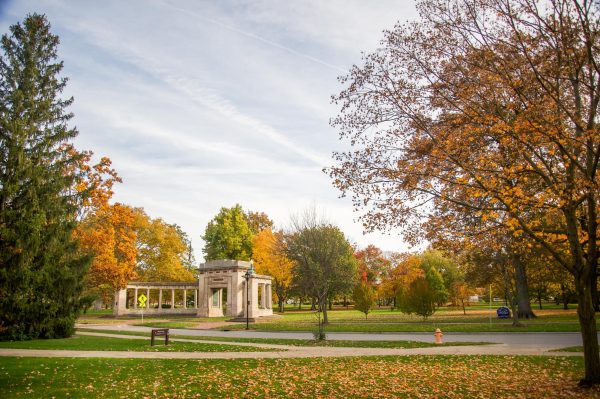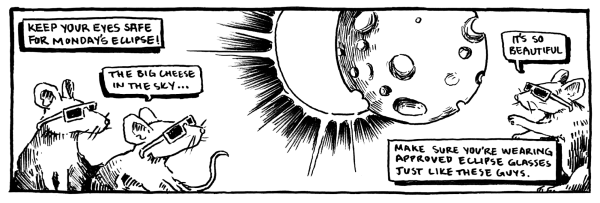“On Second Thought” Promotes Audacity of Innovation
The audacity of innovation. In the words of Assistant Professor of History and Comparative American Studies Tamika Nunley, this simple yet powerful concept is the driving force behind On Second Thought, an undergraduate research journal she is launching this spring in collaboration with an editorial board of four students. The journal — the only one of its kind at Oberlin — focuses on publishing historical research conducted by Oberlin students.
This initiative is an exciting step forward in highlighting the academic research that Obies in the social sciences and humanities engage with on a daily basis, but don’t have a suitable avenue to express other than through far more rigorous and lengthy honors projects. Honors projects are not always easily accessible to students — particularly because of the time and resources required to conduct such extensive research. Though most natural science majors have other opportunities to engage in, and sometimes publish, meaningful research with their professors, there are few such opportunities for non-STEM students. On Second Thought is intended to create another pathway for students to demonstrate their significant, historical undergraduate research in a more accessible and equally valid manner.
On the surface, there are the usual benefits of expanding support for undergraduate research. For students interested in pursuing graduate school degrees, Ph.D. programs, or careers in academia, this journal provides them with the opportunity to garner skills that are tangible, desirable, and transferable in the job market, such as conducting credible research, writing, editing, and interviewing — to name just a few.
Beyond these, however, the approach that Nunley — and the student editorial board that will edit submissions — are bringing to On Second Thought creates especially meaningful opportunities for both those who contribute to the journal, as well as those that read its published work.
One of the journal’s biggest areas of potential impact is the room it creates for meaningful and mutual collaboration between the College and the Conservatory — an area of overlap Nunley has emphasized in her interdisciplinary work with undergraduate research. While the Academic and Administrative Program Review has previously emphasized how fortunate the College is for the musical resources available to them courtesy of the Conservatory, On Second Thought provides an opportunity for the College to share its resources as well, and invite Conservatory faculty and students to consider more deeply how their work and music and can fit into larger bodies of historiographical research.
This overlap highlights the importance of envisioning historical research in an interdisciplinary context. As a field, history can often tie itself rigidly to prescribed conventions and expectations — often, as On Second Thought’s leadership explains, at the expense of inclusive, interdisciplinary work that can bring more diverse groups to the table and expand understanding of important historical concepts that inform the present day. One of the team’s core ideas is that history is all around us, often in ways that we are trained in an academic context to overlook or ignore. This history is not limited to the major, and, as a liberal arts college, it is vital that we unlearn such arbitrary boundaries of academic convention.
Especially in a world where our current and impending challenges are all interdisciplinary, correcting the perception that history or any other subject is self-contained is imperative to effectively grapple with interconnected issues. For example, Oberlin’s College and community have demonstrated strong support toward solving problems regarding the climate emergency, adaptation, and resilience. However, without a working knowledge of past national and international decisions that have influenced the trajectory of environmental degradation and injustice we see today, there is no way to make responsible environmental, political, or scientific decisions regarding climate change today. History is the only insight we have as problem-solvers to correct past wrongs and create a better future.
Finally, not only does this research journal create space for students to experiment with different methodologies of historical research that they might otherwise have not had a chance to explore, it also allows undergraduates to join generative academic conversation earlier in their careers. Rather than having to wait until entering graduate schools or later, students will be able to explore different ideas — when the stakes are relatively lower — as well as build professional research and writing experiences much sooner.
It is important that young people join conversations regarding establishing strong historical narratives through research as early as possible. As the generation facing dire and existential consequences from past decisions, it is crucial that we do not blindly buy into “tried and tested” methodologies and ideas. By investing time and energy into building independent and critical thinking mechanisms to examine our history, we are creating the ability to learn from past mistakes and build a better world than the one we have right now.
Nunley and her team of students have laid a brick on the road of the education we liberal arts students aspire to every day. Each day, Obies dare to dream that one person can change the world. On Second Thought is a powerful reminder of how this student body’s audacity to innovate can help break down the barriers that would otherwise hold us back from creating a lasting connection through crafting meaningful scholarship.




